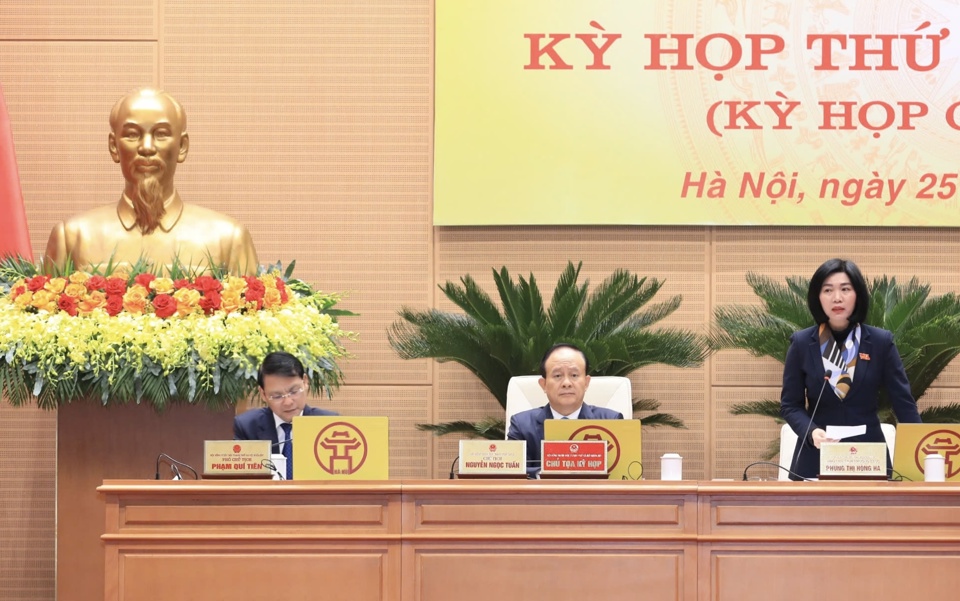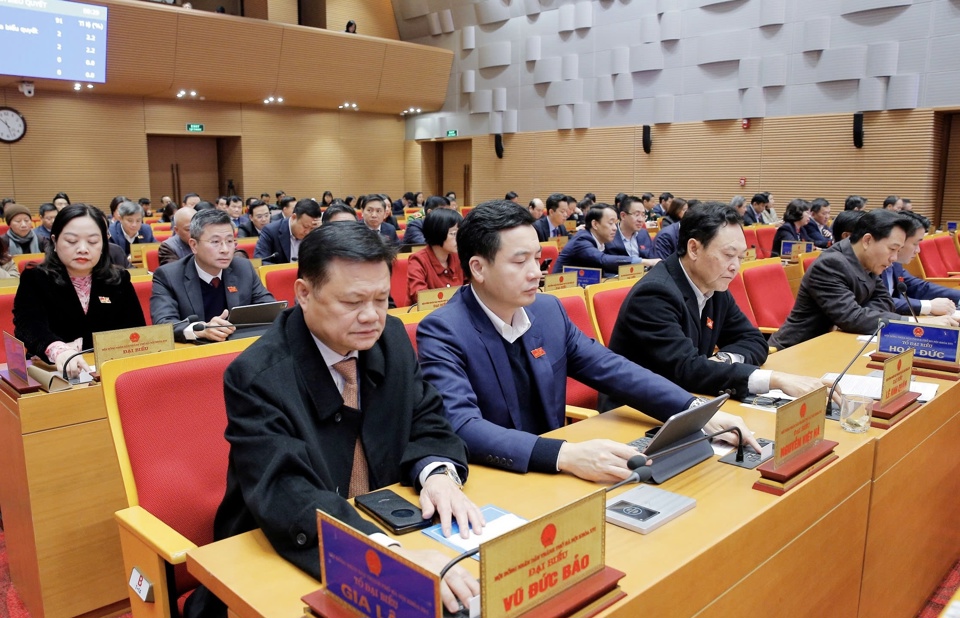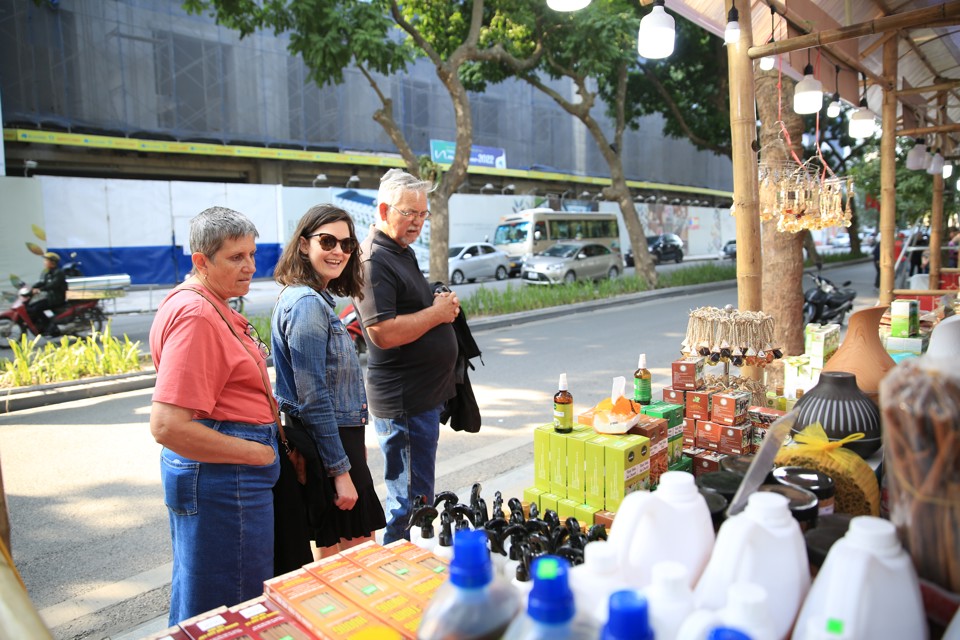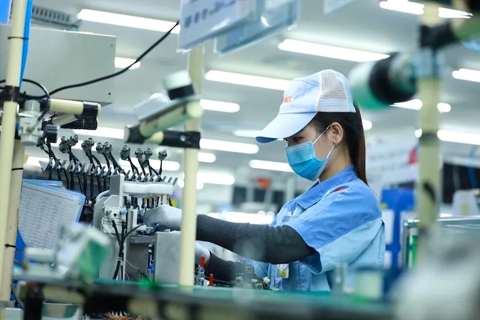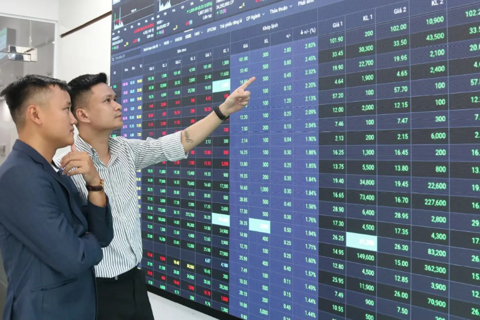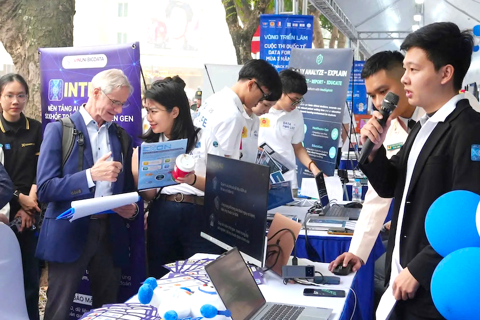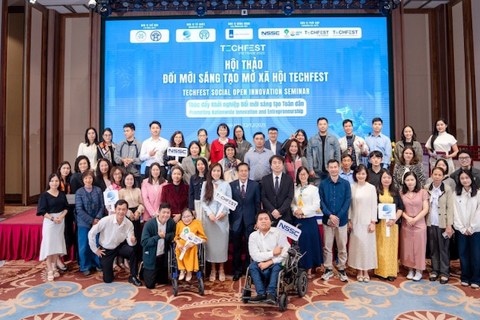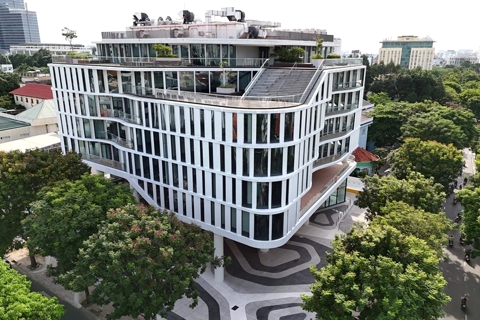Hanoi revises up GRDP growth target to 8% in 2025
The city is committed to streamlining its organizational structure to be more efficient while ensuring that reforms do not disrupt residents or business operations.
The Hanoi People’s Council has ratified the revised socio-economic development plan for 2025, including a gross regional domestic product (GRDP) growth target of 8%.
| Overview of the session. Photos: Pham Hung/The Hanoi Times |
Other key economic targets for 2025 include a GRDP per capita of $6,880, a 7% increase in export turnover, and consumer price index (CPI) growth below 5%, among others.
Prior to the adoption of the resolution, the Standing Vice Chairwoman of the Hanoi People’s Council Phung Thi Hong Ha stated that raising the 2025 economic growth target from 6.5% to at least 8% reflects the city’s determination to spearhead the country’s development efforts.
Ha suggested key measures to achieve this goal, including decentralizing administrative authority, reforming administrative procedures, ensuring the timely implementation of unique policies under the amended Capital Law, and developing plans for the Hanoi Capital Planning period 2021-2030, with a vision to 2050, and the General Hanoi Capital Planning to 2045, with a vision to 2065.
According to Ha, the city is committed to streamlining its organizational structure to be more efficient while ensuring that the reforms do not disrupt residents or business operations.
“Hanoi will maximize administrative decentralization in all sectors, maintain consistent leadership, and increase accountability among officials while encouraging innovation among government employees,” she noted.
Hanoi is also prioritizing the acceleration of major infrastructure projects, including the West Hanoi drainage system, the Tay Thang Long road from Pham Van Dong Street to Van Tien Dung Street in Bac Tu Liem District, and Phase 1 of the Ring Road 4 project.
The city is encouraging private investment in key industries by continuing administrative simplification, regularly hosting business forums to address challenges, and supporting companies in expanding operations.
A list of priority investment projects is under consideration, particularly in high-tech, environmentally friendly industries, including semiconductor chips, artificial intelligence, energy transition, electronics, automotive manufacturing, and biotechnology. Hanoi seeks to attract $3 billion in registered foreign direct investment (FDI).
To support industrial growth, the city will accelerate the development of industrial clusters, complete 25 clusters under construction with an initial occupancy rate of 25%, and launch 18 new industrial clusters and one new industrial zone. It will also expand 15-20 existing clusters. A key focus is ensuring sufficient electricity supply for industrial zones, the Hoa Lac High-Tech Park, and urban and production areas.
| Delegates during the session. |
Unlocking tourism potential
To stimulate consumer demand and tourism, Hanoi plans to attract investment for an outlet shopping center, establish wholesale markets in Yen Thuong (Gia Lam District) and Me Linh, and ensure that at least 50% of communes have designated points for selling OCOP (One Commune One Product) goods. The city aims to develop at least one new shopping mall, six supermarkets, and 15 traditional markets while increasing promotional events and trade fairs to boost retail and service revenue growth above 14%.
Hanoi is also investing in logistics and transportation, developing advanced logistics hubs, and expanding third-party (3PL), fourth-party (4PL), and fifth-party (5PL) logistics services. The goal is to achieve a 7.9% increase in value added from the transportation and warehousing sectors.
To boost tourism, the city will introduce new travel routes and destinations, launch one or two high-quality golf tours, and establish one or two new pedestrian streets with themed cultural performances and food streets. A sports-entertainment complex with nighttime activities is also planned near the Nam Tu Liem District racetrack. Hanoi aims to attract 31 million visitors, including 7.5 million international tourists (5.3 million staying overnight), with an average hotel occupancy rate of over 65%. Total tourism receipts are expected to grow by more than 13% to approximately $4.94 billion while the hospitality and food services sector is expected to grow by over 9%, and arts and entertainment services by 10.5%.
| Hanoi has been among Vietnam's top destinations for foreign tourists. Photo: Hai Linh/The Hanoi Times |
On the export front, Hanoi will closely monitor global market trends and trade barriers, particularly US trade policies, to adapt quickly and capitalize on opportunities. The city is targeting export turnover growth of at least 7%.
The city will also prioritize supporting businesses in technology adoption and transfer, digital transformation, advanced management systems, productivity and quality enhancement, and intellectual property protection.

